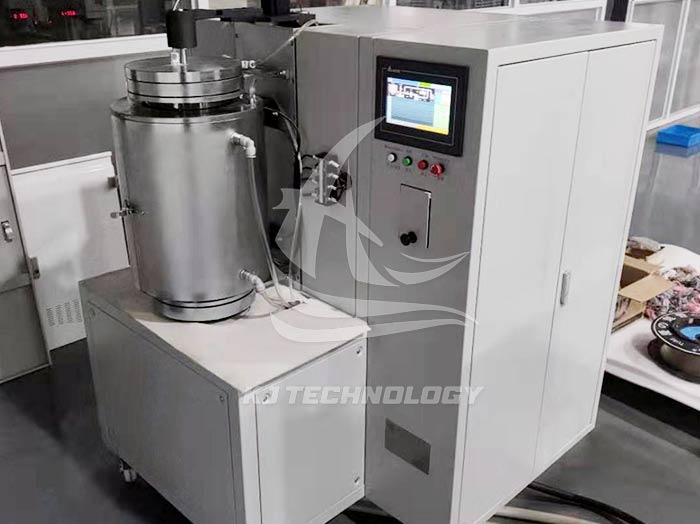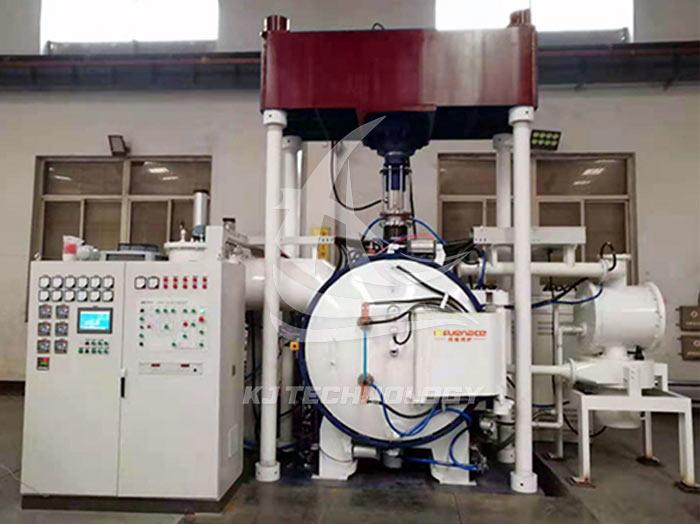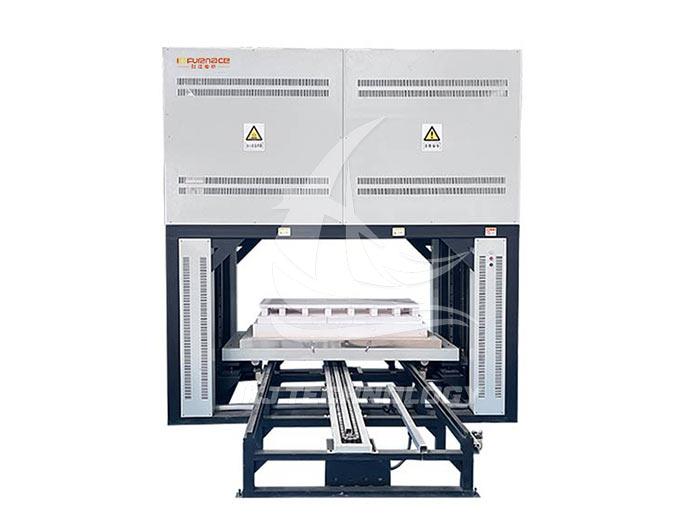Daily maintenance of vacuum powder sintering furnace
 09-09-2025 Author: KJ technology
09-09-2025 Author: KJ technology
The daily maintenance points of vacuum powder sintering furnace are as follows:
1. Furnace body and environmental maintenance
Cleaning and dust prevention
Clean the furnace body, instruments, and control cabinets daily to keep the equipment surface free of dust and oil stains; The paint on the outer shell of the furnace should be intact to prevent rusting.
Flammable and explosive materials are prohibited from being stored within 2 meters around the furnace to ensure the safety of the operating space.
The workplace should be kept dry, especially during the rainy season, to reduce the opening time of the furnace cover and avoid moisture absorption inside the furnace.
leak test
Regularly repair the sealing structure of the furnace mouth (such as sealing rings and observation windows), clean and dry it with alcohol or gasoline during disassembly, apply vacuum grease and assemble it.
After shutdown, the vacuum degree inside the furnace should be kept below 66.5Pa to prevent the material from adsorbing moisture and prolonging the vacuuming time.
Idle device management
Long term idle furnaces should undergo low-temperature operation under vacuum at least once every two weeks (such as holding at 100 ℃ for 2 hours) to check the equipment status.
When not in use, the furnace cover should be sealed and evacuated or filled with pure argon gas (pressure lower than atmospheric pressure) to protect the furnace chamber from drying.
2. Vacuum system maintenance
Vacuum pump maintenance
Replace the vacuum pump oil every 15-20 furnace runs or every 6 months, and observe the oil quality (if it is cloudy or has abnormal viscosity, it needs to be replaced in advance).
Do not touch the pump body when it is hot (40-80 ℃), cool it to room temperature before maintenance.
Regularly clean the oil mist filter to prevent oil pollution of the furnace environment.
Vacuum pipelines and valves
Check that the vacuum pipeline is leak free, the valve operates flexibly, and there is no jamming phenomenon.
The wax trap, wax collection box, and dewaxing pipeline should be cleaned every 3-5 heats to prevent blockage caused by residual wax solvents.
Vacuum degree detection
Regularly check the vacuum level inside the furnace using vacuum instruments to ensure compliance with process requirements (such as medical grade products requiring ≤ 10 ⁻ ³ Pa).
If the vacuum degree decreases, check the sealing of the furnace body, the performance of the vacuum pump, and the smoothness of the pipeline.
3. Heating system maintenance
Heating element inspection
Regularly check whether the wiring terminals of heating elements (such as molybdenum wire and graphite rod) are loose, and tighten them in a timely manner to prevent short circuits.
Observe whether the surface of the heating element is oxidized or nodular, and if so, use sandpaper to polish or replace it.
Temperature control calibration
Regularly calibrate temperature sensors (thermocouples) to ensure that the displayed temperature is consistent with the actual temperature (with an error of ≤± 5 ℃).
Check the thermal instruments and electrical components, and perform maintenance according to the technical instructions.
Hot zone component processing
After major repairs to the hot zone components, they need to be dried in an oven with a heating rate of ≤ 5 ℃/min and a holding time of ≥ 4 hours to eliminate moisture.
Before using a furnace that has been idle for a long time, it is also necessary to dry it and check the working condition of the equipment.
4. Maintenance of furnace and transmission components
Furnace cleaning
Clean the residual powder and oxide scale in the furnace after each loading and unloading to prevent product contamination.
Check if the air holes in the furnace are blocked to ensure even airflow.
Lubrication of transmission components
Regularly add or change oil to mechanical transmission parts (such as mesh belts and sliding rails) to prevent wear and tear.
There are differences in maintenance methods for different types of mesh belts:
Top pin mesh belt: Use sandpaper to polish the top pin end to prevent scratching the product.
Diagonal mesh belt: Bake at a low speed of 100r/min to remove organic matter.
Troubleshooting of transmission components
If the transmission components have inaccurate limit or control failure, immediately stop the machine for maintenance and prohibit forced operation.
5. Safety and emergency maintenance
Safety operation standards
When the furnace temperature is above 400 ℃, it is forbidden to open the furnace door for a long time to prevent burns or furnace cracking.
It is prohibited to bring corrosive substances or workpieces with moisture into the furnace to avoid damaging the equipment.
Emergency response measures
Power outage: Immediately turn off the heating power and maintain a vacuum state; If the power outage lasts for more than 30 minutes, the furnace needs to be slowly inflated and turned on.
Vacuum leakage: Emergency stop, close the vacuum valve, and open the ventilation system; When the leakage point is inside the furnace, wait for the temperature to drop below 50 ℃ for treatment.
Fire: Cut off the power supply and put out the fire by introducing nitrogen gas; Do not use water or foam extinguishers.
Maintenance qualification requirements
Maintenance operations must be carried out in a power-off state, and non professionals are prohibited from disassembling core components such as vacuum pumps.
Electrical system maintenance must be carried out by certified electricians to ensure personal and equipment safety.








